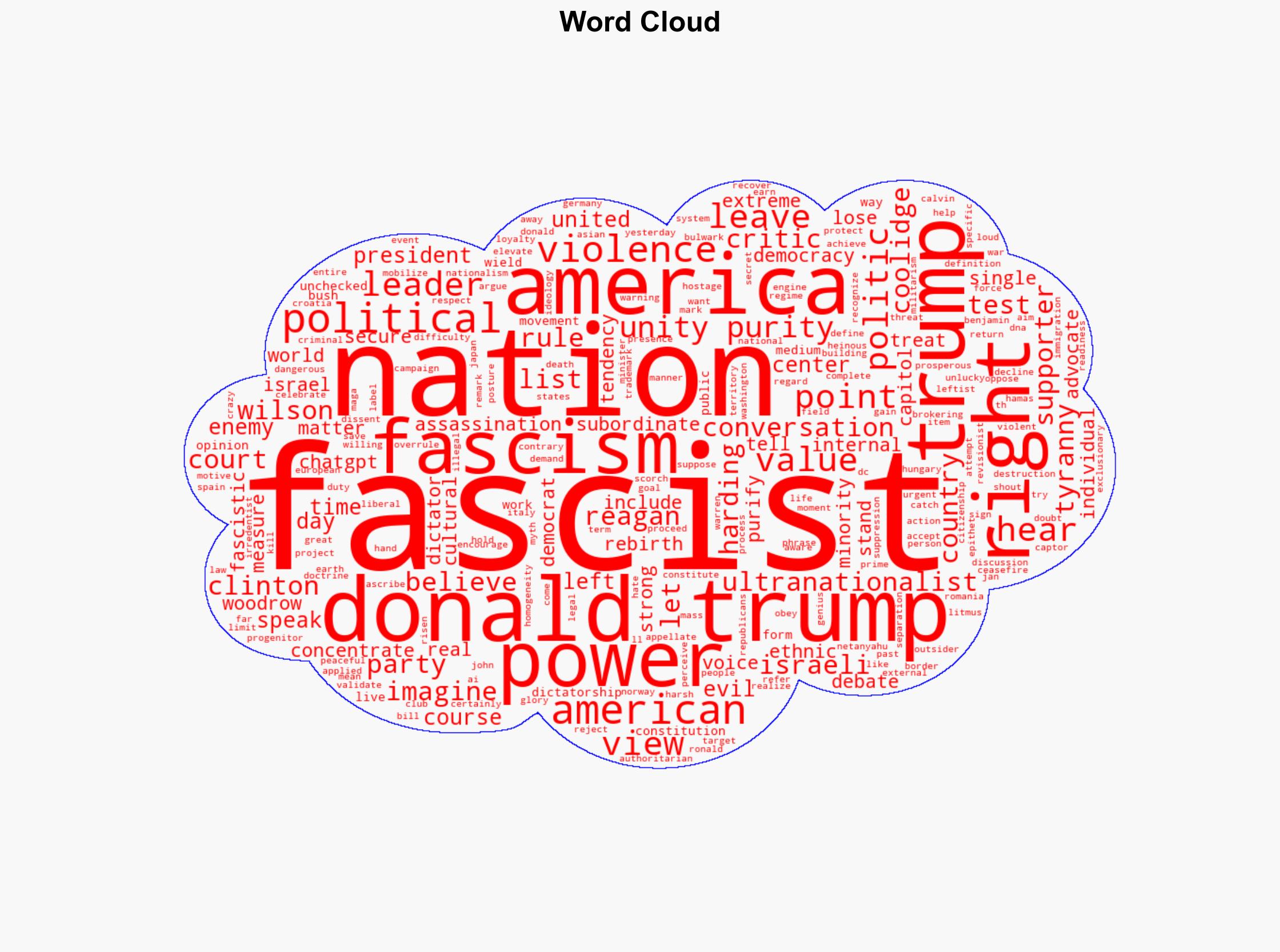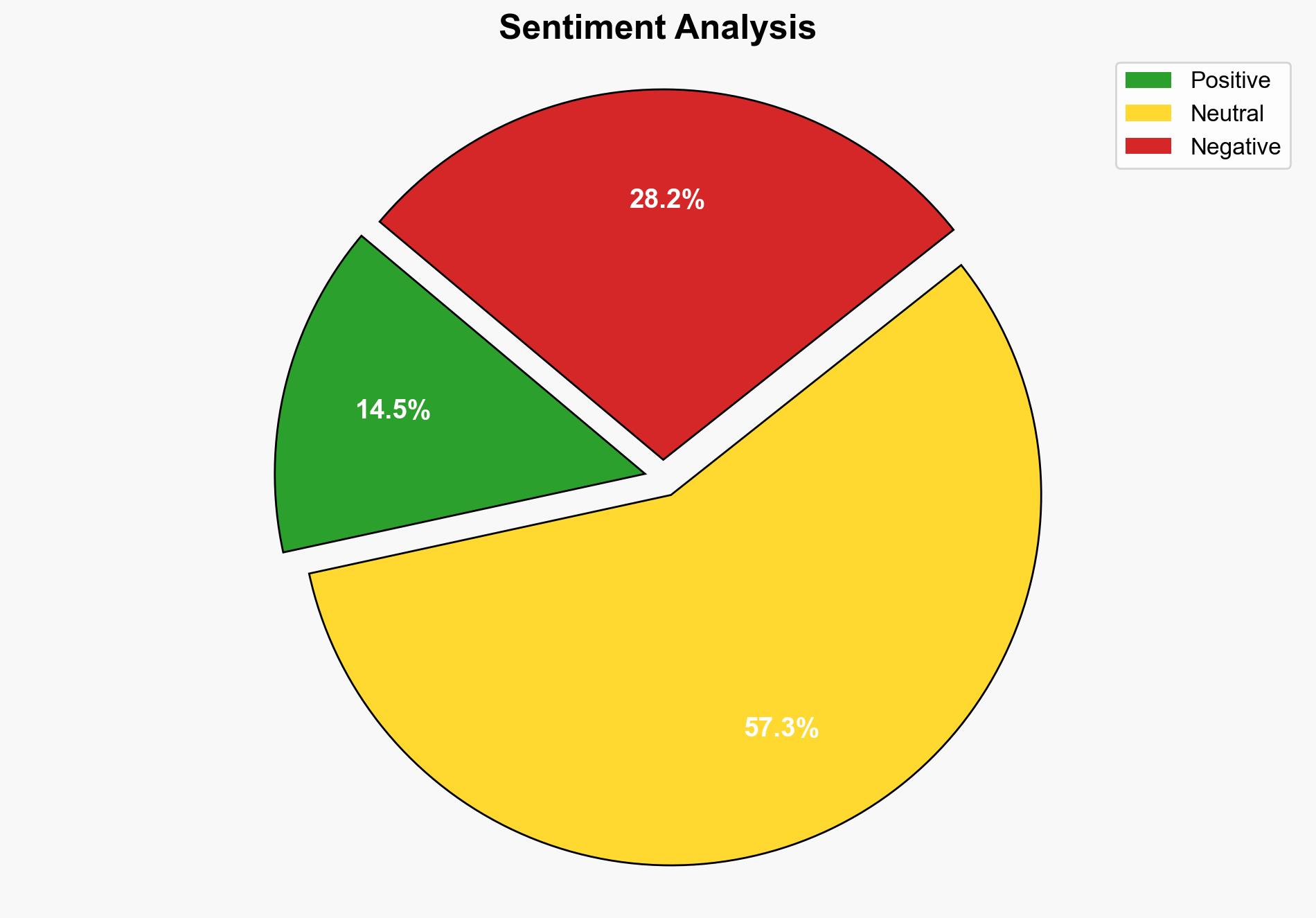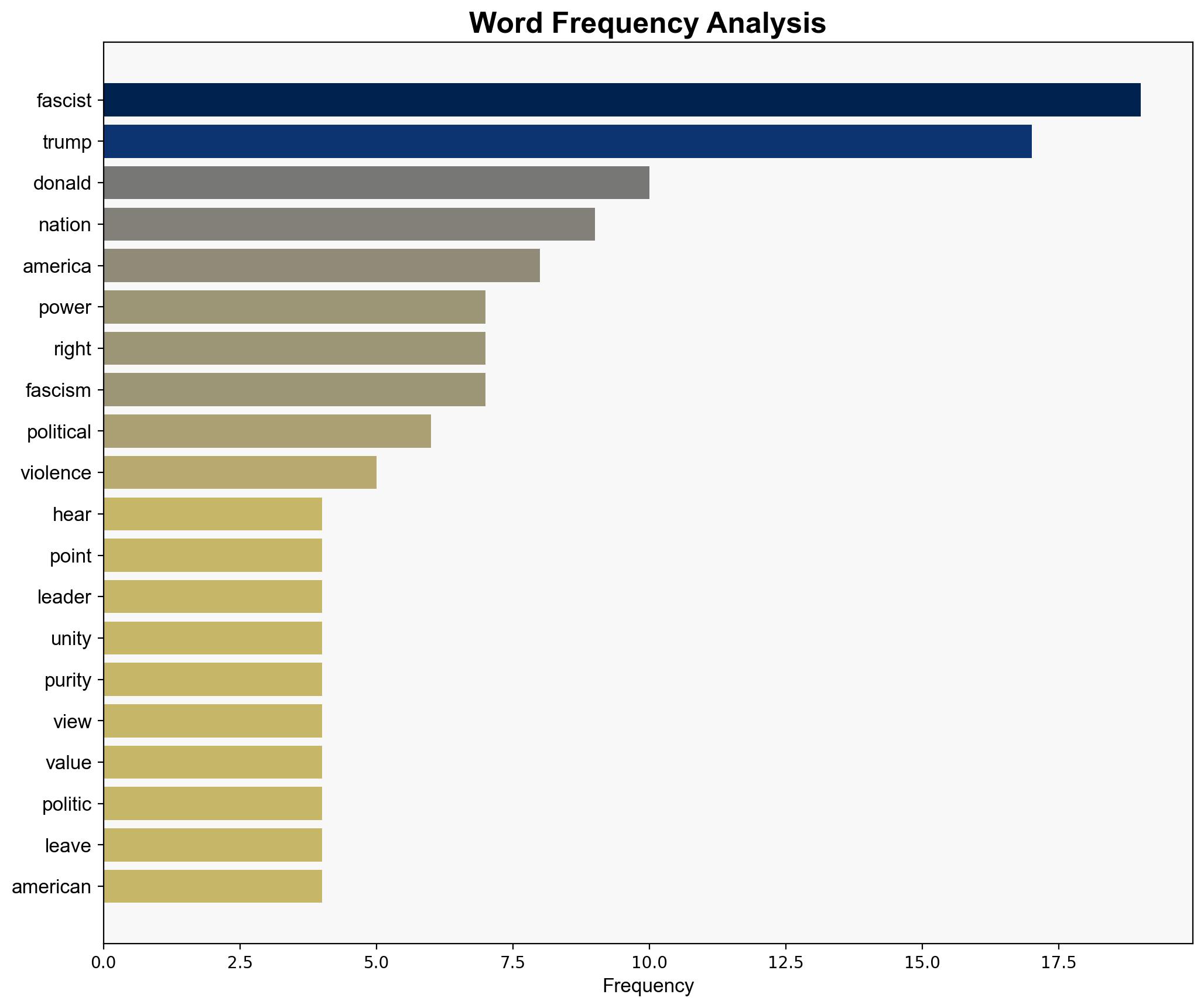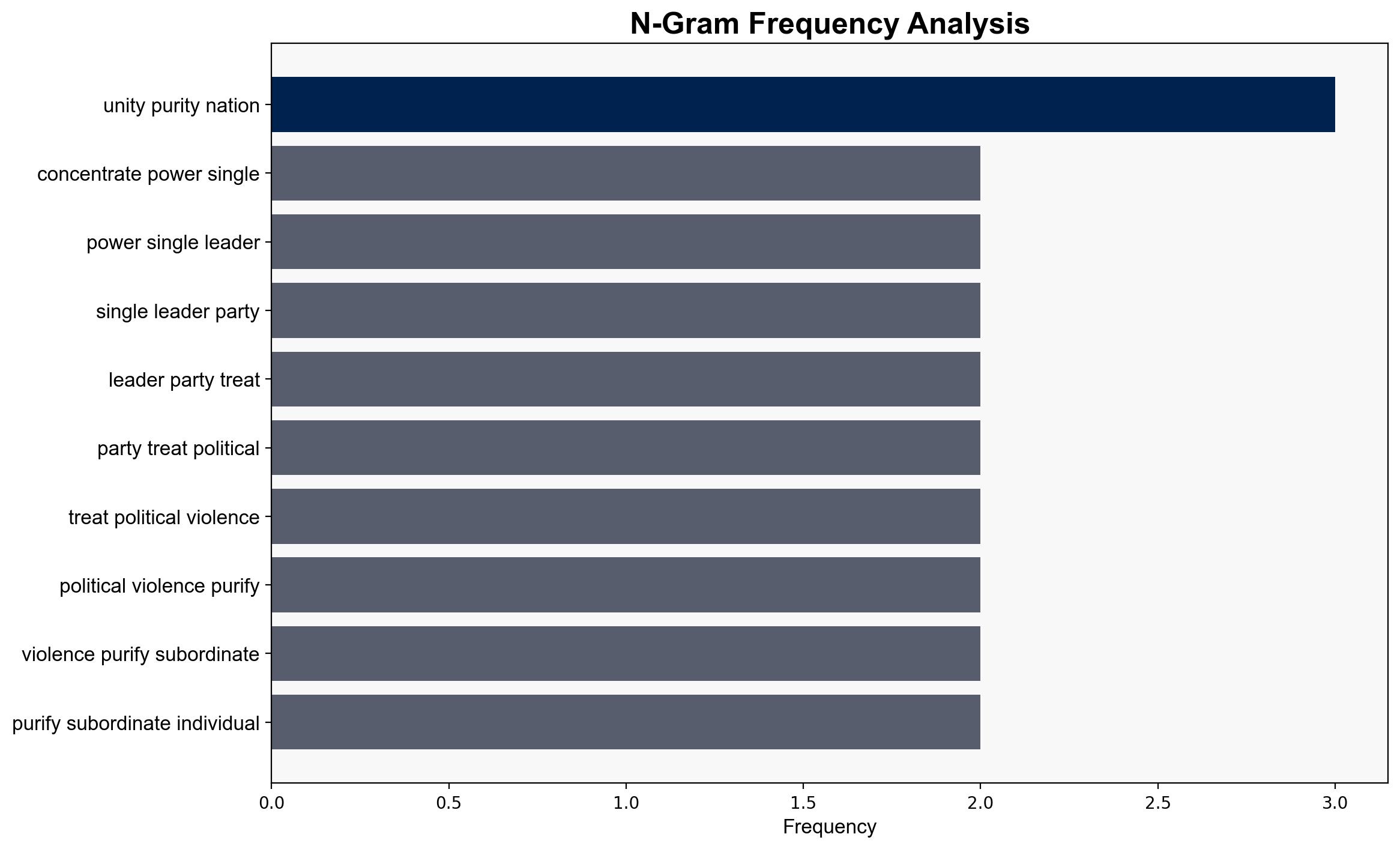So is Trump the ‘Fascist’ that Leftists Keep Saying He is – Americanthinker.com
Published on: 2025-10-17
Intelligence Report: So is Trump the ‘Fascist’ that Leftists Keep Saying He is – Americanthinker.com
1. BLUF (Bottom Line Up Front)
The analysis evaluates whether Donald Trump exhibits fascist tendencies as claimed by some leftist commentators. Two hypotheses are considered: one supporting the notion that Trump’s actions align with fascist characteristics, and another suggesting these claims are exaggerated or politically motivated. The analysis, using structured analytic techniques, finds the latter hypothesis more supported. Confidence level is moderate due to the subjective nature of political labels. Recommended action includes fostering informed public discourse to clarify political rhetoric and reduce polarization.
2. Competing Hypotheses
1. **Hypothesis A**: Donald Trump exhibits fascist tendencies, characterized by ultranationalism, authoritarianism, and a desire to concentrate power.
2. **Hypothesis B**: Claims of Trump being fascist are exaggerated, driven by political bias and misinterpretation of his policies and rhetoric.
Using Analysis of Competing Hypotheses (ACH), Hypothesis B is more supported. The evidence of Trump’s actions, such as advocating for strong borders and national pride, aligns with nationalist rhetoric but does not conclusively demonstrate fascist intent or actions.
3. Key Assumptions and Red Flags
– **Assumptions**:
– Hypothesis A assumes that Trump’s rhetoric and policies directly translate to fascist ideology.
– Hypothesis B assumes political rhetoric is often exaggerated for effect and does not always reflect true intent.
– **Red Flags**:
– Potential bias in interpreting political rhetoric.
– Lack of clear, consistent evidence linking Trump’s actions to historical fascist regimes.
– Over-reliance on subjective definitions of fascism.
– **Blind Spots**:
– The influence of media portrayal on public perception.
– The complexity of political ideologies and their modern interpretations.
4. Implications and Strategic Risks
– **Patterns**: Increasing polarization and the use of extreme political labels can deepen societal divides.
– **Cascading Threats**: Misinterpretation of political actions as fascist could lead to civil unrest or increased political violence.
– **Potential Escalation**: If political rhetoric continues to escalate, it may result in increased domestic instability and challenges to democratic institutions.
– **Dimensions**: Psychological impact on public trust in political systems; geopolitical implications if international perception of U.S. leadership is affected.
5. Recommendations and Outlook
- Encourage bipartisan dialogue to address political polarization and clarify misconceptions about political ideologies.
- Promote media literacy programs to help the public critically assess political rhetoric.
- Scenario Projections:
– **Best Case**: Reduction in political polarization through informed public discourse.
– **Worst Case**: Escalation of political violence and erosion of democratic norms.
– **Most Likely**: Continued political tension with periodic spikes in rhetoric and public unrest.
6. Key Individuals and Entities
– Donald Trump
– Benjamin Netanyahu
– Hamas (mentioned in context)
7. Thematic Tags
national security threats, political polarization, media influence, democratic stability




